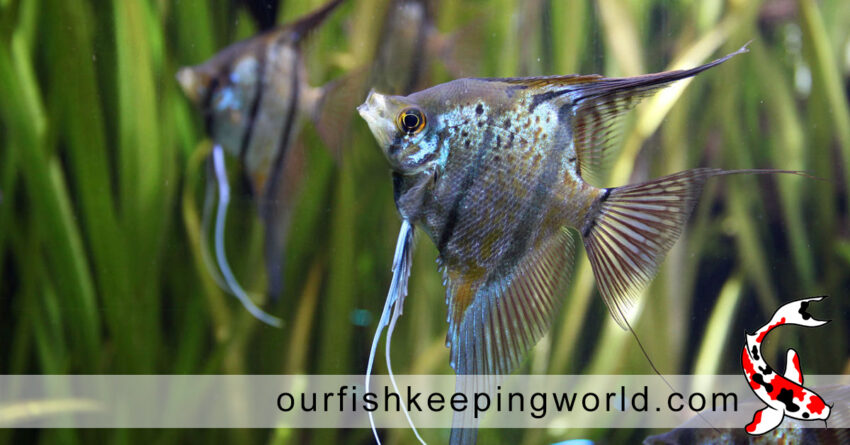Freshwater angelfish are among the most sought-after aquarium fish, prized for their symmetrical shape, long fins, and beautiful swimming action. They are members of the cichlid family and natively inhabit the Amazon Basin in South America, where they live in slow-moving rivers, swamps, and densely planted waters.
They typically have a compressed body to the side, with long triangular fins, giving them a tall and slender appearance. The most common colors are silver with black vertical bands, marble, koi patterns, and even veil-tail varieties with long fins.
Freshwater Angelfish are among the most popular aquarium fish, known for their graceful shape, long fins, and striking patterns. Here’s a quick overview:
🐠 General Information
- Scientific Name: Pterophyllum scalare
- Family: Cichlidae (same family as Oscars, Discus, etc.)
- Origin: Slow-moving rivers and streams of the Amazon Basin in South America.
- Lifespan: 8–10 years (with good care).
- Size: Usually 6 inches long and up to 8 inches tall (including fins).
🌿 Appearance
- Body is tall and laterally compressed (flat from side to side).
- Long, triangular dorsal and anal fins.
- Colors: silver with black vertical stripes (wild type), but many varieties exist (koi, marble, veil-tail, albino, golden, etc.).
🏠 Tank Requirements
- Tank Size: Minimum 20 gallons for a pair, larger (30–55 gallons) for groups.
- Water Conditions:
- Temperature: 24–28°C (75–82°F)
- pH: 6.5–7.5 (slightly acidic to neutral)
- Soft to moderately hard water
- Setup: Plants, driftwood, and vertical decorations (they like tall tanks).
- Filtration: Gentle water flow (they dislike strong currents).
🍽️ Diet
- Omnivorous: eats flakes, pellets, frozen/live food (brine shrimp, bloodworms, daphnia).
- Should be fed a varied diet for best health and coloration.
👨👩👧 Behavior & Tank Mates
- Semi-aggressive, especially during breeding.
- Can be kept in groups, but territorial disputes may occur.
- Best tank mates: peaceful species like Corydoras, small Plecos, Mollies, larger Tetras (avoid fin-nippers like Tiger Barbs).
- Avoid very small fish (like Neon Tetras) — adults may eat them.
🐣 Breeding
- Form monogamous pairs.
- Lay eggs on flat surfaces (broad leaves, glass, or decorations).
- Parents guard eggs and fry, but sometimes may eat them (especially first few times).
